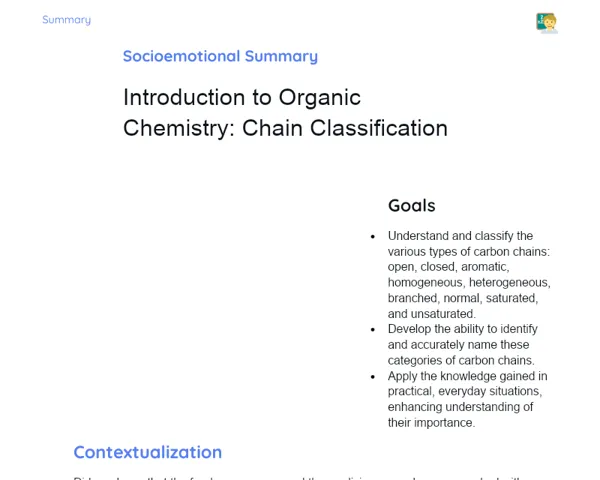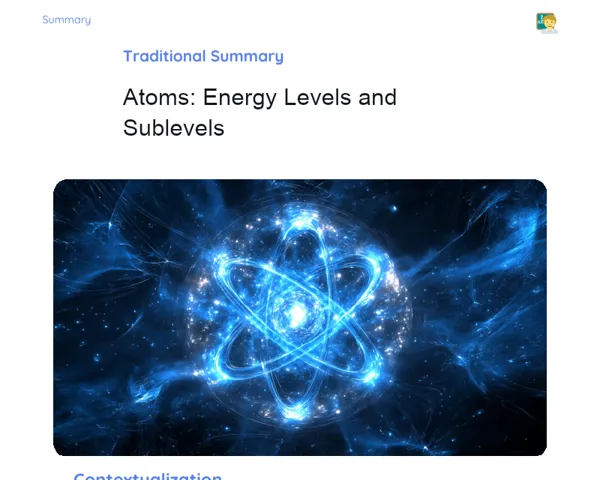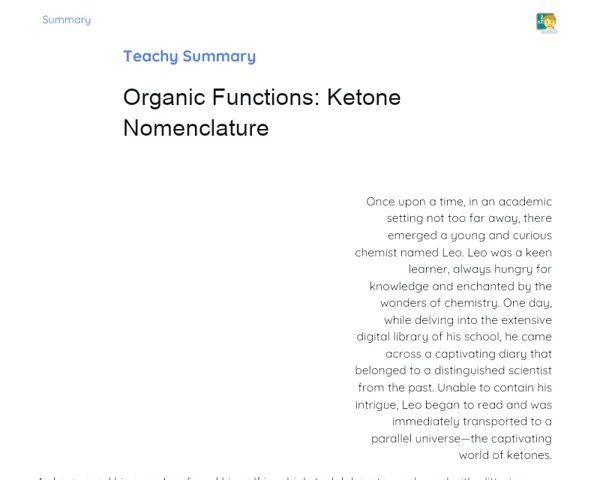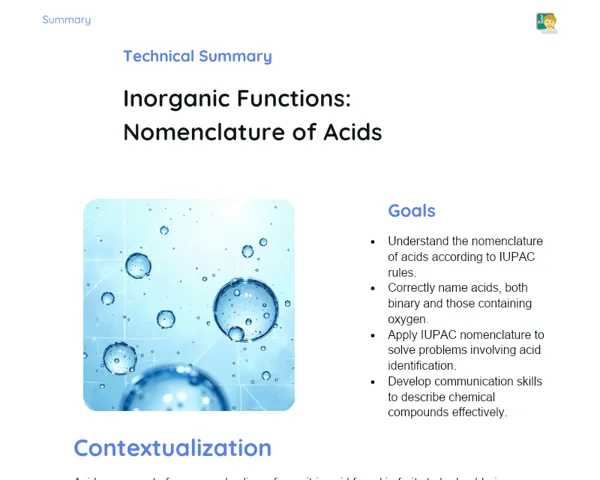Objectives
1. 🎯 Recognize and differentiate nitro compounds from other organic compounds, grasping their unique chemical structures.
2. 🎯 Excel in IUPAC nomenclature for nitro compounds, accurately applying the prefix 'nitro' and other naming conventions with confidence.
Contextualization
Nitro compounds are not only a captivating aspect of organic chemistry; they are crucial across several industries, ranging from explosives manufacturing to drug production. Take trinitrotoluene, or TNT, for instance—this nitro compound is well-known for its explosive properties. Interestingly, nitro compounds also have a significant role in creating certain dyes and medications. This lesson aims to enhance your theoretical understanding while shedding light on the practical importance of these compounds in various industries and everyday applications. Are you ready to dive into the fascinating world of nitro compounds? 💥
Important Topics
Nitro Group (-NO2)
The nitro group is among the most fascinating functional groups in organic chemistry, comprising a nitrogen atom linked to two oxygen atoms, generally represented as -NO2. This group typically attaches to a carbon backbone, greatly influencing the original compound's chemical properties. Its presence serves as a vital marker in chemical reactions, especially in the creation of explosives and pharmaceuticals.
-
Reactivity: Nitro compounds are highly reactive, making them indispensable in the explosives sector due to their capacity to release substantial energy rapidly.
-
Polarity: The nitro group enhances the polarity of the compound, affecting its solubility and reactivity—key traits in drug development.
-
Synthesis: Introducing the nitro group into organic molecules is essential for chemical syntheses, particularly in dye and polymer production.
IUPAC Nomenclature for Nitro Compounds
IUPAC nomenclature is a standardized system globally utilized to guarantee that each new organic compound receives a unique and unmistakable name. For nitro compounds, the nitro group acts as a substituent, adopting the prefix 'nitro'. The remainder of the name is built from the main carbon chain, with a numeric locator pinpointing the nitro group's position within the chain.
-
Standardization: IUPAC nomenclature facilitates clear communication among scientists worldwide regarding specific compounds, eliminating ambiguities.
-
Location: Accurately identifying the nitro group's position in the carbon chain is crucial, as it can significantly alter the compound's properties.
-
Multiple Compounds: For molecules with more than one nitro group, each must be marked with an appropriate numeric prefix to specify its location.
Practical Applications of Nitro Compounds
Beyond their critical role in explosives production, nitro compounds are essential in various sectors. They are involved in pharmaceuticals, where their properties contribute to developing more effective medicines, and in the dye industry, enhancing the quality and durability of pigments used in textiles and paints.
-
Medicines: Numerous pharmaceuticals contain nitro compounds, utilizing their reactivity to aid in disease treatment.
-
Dyes: Nitro compounds are fundamental in dye synthesis, especially for the paints and textiles that require longevity.
-
Food Industry: On a smaller scale, some nitro compounds are utilized to augment flavors and preserve food items, showcasing their versatility.
Key Terms
-
Nitro Group (-NO2): A functional group in organic chemistry made up of a nitrogen atom bonded to two oxygen atoms and attached to a carbon backbone.
-
IUPAC Nomenclature: An internationally recognized system for naming chemical compounds, providing a standardized method for chemical nomenclature.
-
Reactivity: Refers to a chemical substance's tendency to participate in a chemical reaction.
-
Polarity: A measure of the variation in electric charge distribution within a molecule.
For Reflection
-
How does the presence of a nitro group impact the physical and chemical characteristics of an organic compound?
-
What is the importance of accurately applying IUPAC nomenclature when discussing chemical compounds, particularly in scientific research?
-
What could be the consequences of improper use of IUPAC nomenclature in industrial scenarios, such as in drug or explosive manufacturing?
Important Conclusions
-
We revisited the captivating chemistry of nitro compounds, emphasizing their distinctive structures and the significance of correct IUPAC nomenclature for effective scientific communication.
-
We delved into the practical applications of nitro compounds in various sectors including pharmaceuticals, food, and explosives, illustrating the relevance of this knowledge in our daily lives.
-
We recognized the critical importance of accurately locating and naming nitro groups in organic compounds, underlining how minor alterations can significantly affect a substance's properties.
To Exercise Knowledge
💥 Home Laboratory: Crafting Molecular Models - Use simple materials like modelling clay or coloured paper to create models of nitro compounds. Name each one following IUPAC nomenclature and present their potential practical applications creatively to your family or friends.
Challenge
🔍 Chemical Detective Challenge - Look for a product at home that might contain nitro compounds (like medicines or food dyes) and examine its label and composition. Share your findings creatively, discussing the usage of nitro compounds and their importance.
Study Tips
-
📚 Create vibrant summaries of the main points from the lesson using markers to highlight the tenets of IUPAC nomenclature.
-
🧪 Watch educational videos online that explain the synthesis and reactions related to nitro compounds for better visualization of the concepts discussed.
-
🔗 Collaborate with your peers for discussions and to tackle practical exercises on nomenclature together, reinforcing collective learning.



